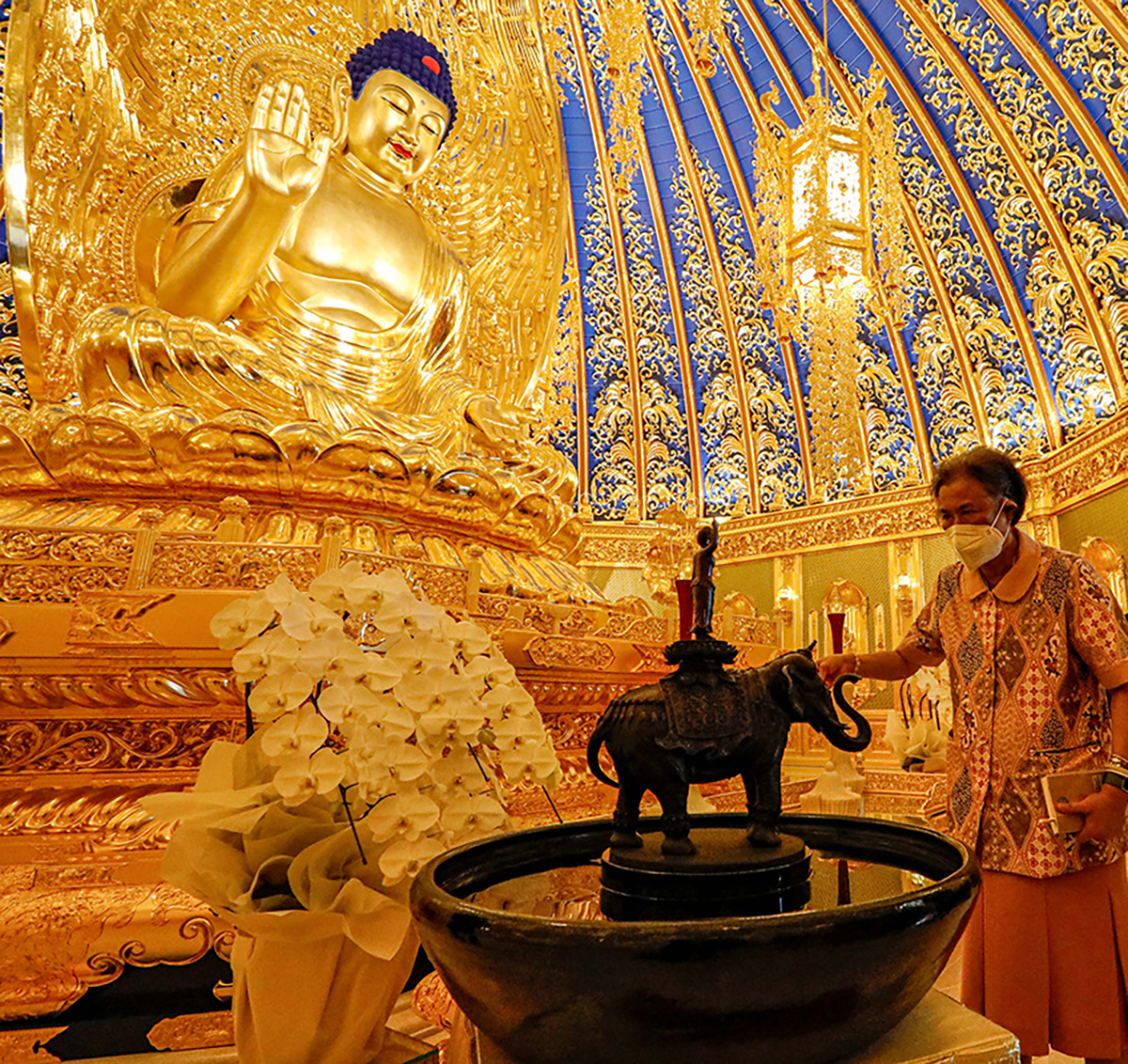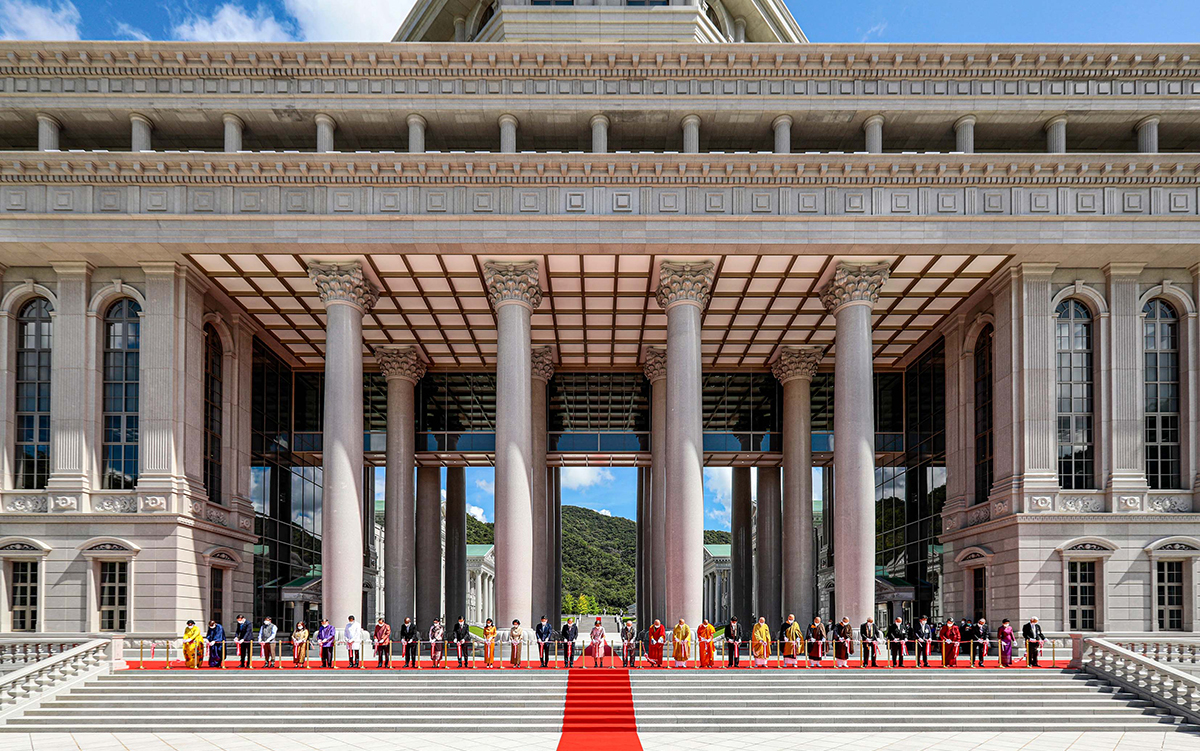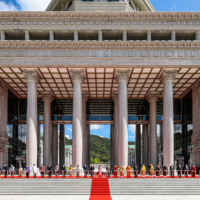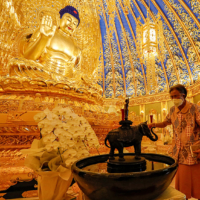In September, Buddhist dignitaries from around the world came to Japan to celebrate the completion and revival of the Nalanda Mahavihara monastery, which served as the center of Buddhist learning in India centuries ago.
Also referred to as the Supreme Buddhist Vihara, about 3,300 people participated in the commemorative event, which was held on Sept. 13 in Kato, Hyogo Prefecture. Her Royal Highness Princess Maha Chakri Sirindhorn of Thailand, as well as royalty and Buddhist practitioners from around the world, were invited to attend.
According to the World Buddhist Supreme Conference Headquarters, which organized the ceremony, the original Nalanda Mahavihara was established in northern India in the fifth century and once hosted as many as 10,000 learned monks before falling into ruin. The re-establishment and reinvigoration of this venerated place of learning had long been aspired to. Against this backdrop, the decision was made at the Fourth Buddhist Summit in Thailand in 2005 to reconstruct the Nalanda Mahavihara on a vast tract of land next to the Royal Grand Hall of Buddhism, the Nenbutsushu Sampozan Muryojuji Head Temple, in a mountainous area of Kato blessed with abundant greenery and clean air.
It is said that Buddha predicted the expansion of Buddhism would head east, and the re-establishment of the Nalanda Mahavihara in the place often referred to as the eastern end of the world can be recognized as the realization of Buddha’s prediction.

Construction of the magnificent 27,638-square-meter monastery began in 2010 and was finished in about 10 years. Just after its completion, however, the opening ceremony was postponed by the COVID-19 pandemic.
Before the ribbon-cuttting ceremony, Thailand’s Sirindhorn attended the unveiling of a monument built to commemorate the new Nalanda Mahavihara in front of 16 Corinthian monolith pillars standing some 18 meters high. Among the dozens of other guests and dignitaries present were Her Royal Highness Princess Ashi Dechan Wangmo Wangchuck of Bhutan, Her Royal Highness Princess Norodom Marie and Her Royal Highness Princess Norodom Rattana Devi of Cambodia.
Sirindhorn stated in her written declarations for the opening of the Eighth Buddhist Summit and the Nalanda Mahavihara that the re-establishment of the monastery has been “the cherished dream for all Buddhists in the world for 800 years.”
“It is a great happiness to see the completion of such a magnificent institution of Buddhist learning,” she wrote.
The massive and sophisticated monastery makes ample use of stone in pillars, floors and bridges, as well as numerous elaborate sculptures placed both indoors and on the grounds of the compound to tell the stories behind Buddhist teachings. Buildings housing the various facilities, including rooms for learning, practicing and sermons, as well as an auditorium and a library with a rich collection of books about all kinds of Buddhist sects, are lined up on the east and west sides with a spacious courtyard in between.
As Sirindhorn wrote in her opening declaration, “This sanctuary of learning in Buddhist Studies, Nalanda Mahavihara in Japan, has been reconstructed to revive the glory of the past Nalanda Mahavihara,” and the monastery plans to accept learned monks from around the world to contribute to the development of Buddhism and the dissemination of the teachings of Buddha.
She called Japan “a beautiful and peaceful country” and expressed her pleasure to hold this year’s Buddhism summit “to make a stir in the modern world filled with confrontation and conflicts.” Upon the completion of the ceremony, the summit was held from Sept. 14 to 15 with the attendance of Buddhist teachers from 51 countries.





